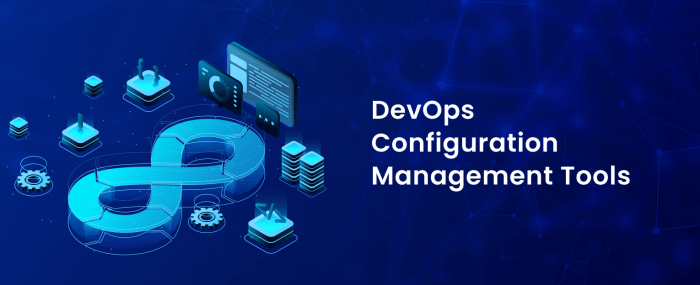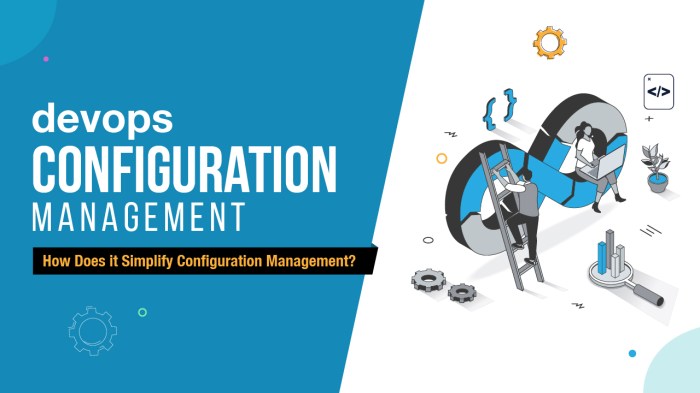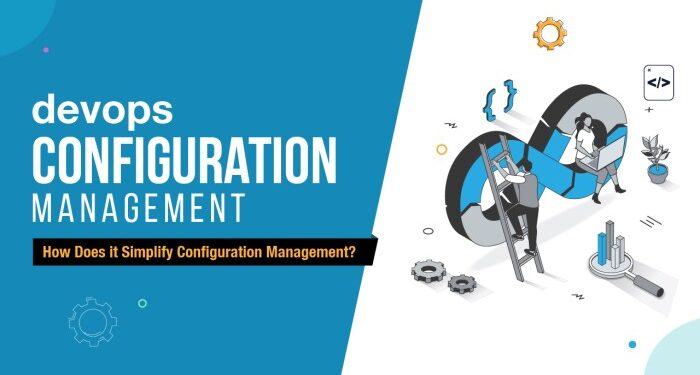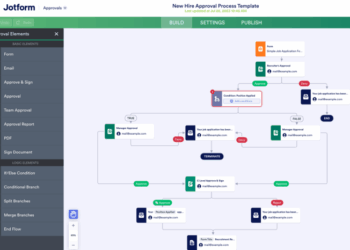Embarking on the journey into The Future of Configuration Management in DevOps, this introductory paragraph aims to intrigue and inform readers about the evolving landscape of software development practices.
Delve into the realm of configuration management, its pivotal role, and the shift towards more efficient methodologies that drive modern DevOps processes.
Introduction to Configuration Management in DevOps
Configuration management in DevOps is a crucial process that focuses on managing and maintaining the configuration settings of software systems throughout their lifecycle. It involves tracking changes, maintaining consistency, and ensuring that the software environment is stable and reliable.
Role of Configuration Management in Software Development
Efficient configuration management plays a vital role in software development by providing the following benefits:
- Ensuring consistency: By managing configuration settings, developers can maintain consistency across different environments, which helps in reducing errors and ensuring smooth deployment.
- Version control: Configuration management allows teams to track changes made to the software configuration, enabling them to revert to previous versions if needed.
- Collaboration: It facilitates collaboration among team members by providing a centralized repository for configuration settings, making it easier to share and manage configurations.
Importance of Efficient Configuration Management Practices
Efficient configuration management practices are essential for the success of software projects due to the following reasons:
-
Reduced downtime: Proper configuration management helps in identifying and resolving configuration-related issues quickly, reducing system downtime and improving overall reliability.
- Enhanced security: By managing configurations effectively, organizations can ensure that their systems are secure by implementing necessary security measures and updates.
- Scalability: Efficient configuration management practices enable organizations to scale their software systems efficiently by easily replicating configurations and settings across different environments.
Traditional vs. Modern Approaches to Configuration Management
In the realm of DevOps, configuration management plays a crucial role in maintaining consistency and reliability across different environments. Let's delve into the comparison between traditional and modern approaches to configuration management.
Traditional Configuration Management Methods
In traditional configuration management, manual processes were predominantly used to manage configurations. This involved manually updating servers, installing software, and configuring settings. Examples of tools used in traditional configuration management include:
- Shell scripts
- Ansible
- Chef
- Puppet
These tools required significant manual intervention and were often time-consuming and error-prone.
Modern Approaches in Configuration Management
Modern approaches to configuration management leverage automation and infrastructure as code to streamline processes and improve efficiency in DevOps. By using tools like:
- Terraform
- Ansible
- Chef
- Puppet
Teams can define infrastructure in code, allowing for automated provisioning, configuration, and deployment. This not only reduces human error but also ensures consistency and scalability in complex environments.
Automation in Configuration Management

Automation plays a crucial role in configuration management within DevOps practices
Streamlining Deployment Process with Automation
Automation in configuration management allows for the rapid and consistent deployment of infrastructure and applications. It enables teams to create, update, and manage configurations automatically, eliminating the need for manual intervention at each step of the process.
- Automated provisioning: Tools like Ansible, Puppet, and Chef automate the provisioning of servers and services, ensuring that resources are configured correctly and consistently.
- Continuous deployment: Automation tools like Jenkins and GitLab CI/CD automate the deployment process, allowing teams to push code changes to production quickly and reliably.
- Configuration drift detection: Tools like SaltStack and Terraform help detect and correct configuration drift, ensuring that all systems remain in the desired state.
Popular Automation Tools for Configuration Management
- Ansible:A popular automation tool that uses simple, declarative language to describe system configurations.
- Puppet:Known for its scalability and automation capabilities, Puppet helps manage complex infrastructure efficiently.
- Chef:Enables users to define infrastructure as code and automate the configuration of servers and applications.
- Jenkins:A leading automation server that facilitates continuous integration and delivery pipelines.
- Terraform:Infrastructure as code tool that allows for the provisioning of infrastructure resources across various cloud providers.
Infrastructure as Code (IaC) and Configuration Management
Infrastructure as Code (IaC) is the practice of managing and provisioning computing infrastructure through machine-readable definition files, rather than physical hardware configuration or interactive configuration tools. In relation to configuration management, IaC allows for the automation of infrastructure setup and maintenance, ensuring consistency across environments.
Enhanced Configuration Management Practices with IaC
- IaC streamlines the process of managing infrastructure configurations by codifying them into version-controlled files, making it easier to track changes and maintain a record of configurations.
- It enables the reproducibility of infrastructure setups, as the same code can be used to deploy and configure environments consistently, reducing the risk of configuration drift.
- With IaC, organizations can achieve faster provisioning of infrastructure and deployments, leading to improved agility and scalability in their operations.
Examples of IaC Tools and Their Impact on DevOps Workflows
- Terraform:Terraform is a popular IaC tool that allows users to define and provision infrastructure resources using declarative configuration files. It supports a wide range of cloud providers and helps automate infrastructure management tasks.
- Ansible:Ansible is another IaC tool that focuses on automation, enabling users to define infrastructure configurations in simple, human-readable YAML files. It simplifies the process of configuration management and can be integrated seamlessly into DevOps workflows.
- Puppet:Puppet is a configuration management tool that also supports IaC practices. It allows for the automation of infrastructure provisioning and configuration, helping organizations maintain consistency and compliance across their environments.
Summary

As we conclude this discussion on The Future of Configuration Management in DevOps, it becomes evident that embracing automation and Infrastructure as Code are key components in optimizing software development workflows. Stay tuned for more advancements in this dynamic field.
FAQ Resource
What is the role of automation in configuration management?
Automation plays a crucial role in streamlining deployment processes, reducing human error, and ensuring consistency in configuration setups.
How does Infrastructure as Code (IaC) enhance configuration management practices?
Infrastructure as Code enables automated provisioning of resources, version control of infrastructure configurations, and scalability, thus enhancing the agility and reliability of configuration management.
What are examples of popular automation tools for configuration management?
Popular automation tools include Ansible, Puppet, Chef, and SaltStack, which help in automating repetitive tasks and managing infrastructure configurations efficiently.













